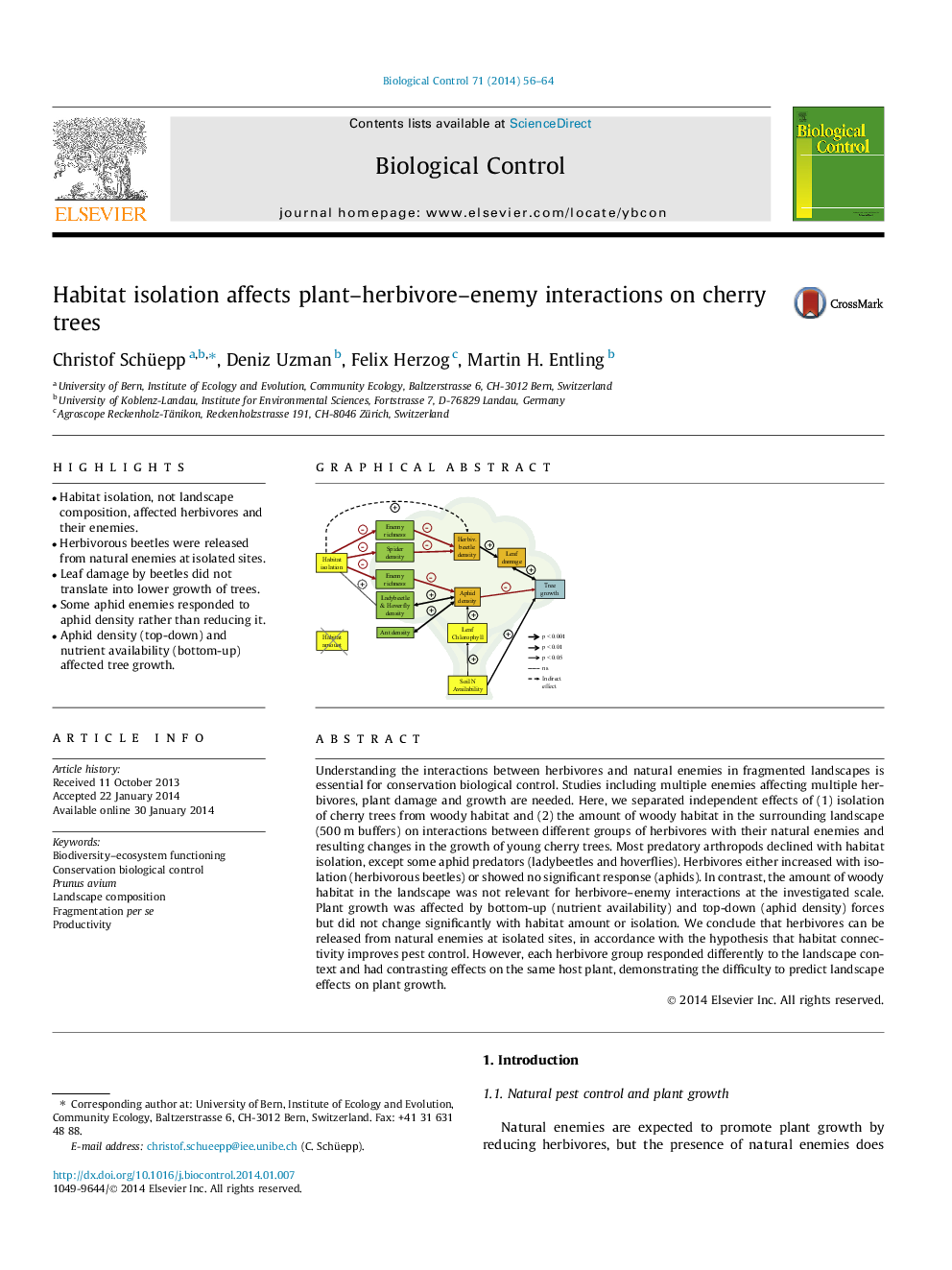| کد مقاله | کد نشریه | سال انتشار | مقاله انگلیسی | نسخه تمام متن |
|---|---|---|---|---|
| 4503949 | 1624263 | 2014 | 9 صفحه PDF | دانلود رایگان |
• Habitat isolation, not landscape composition, affected herbivores and their enemies.
• Herbivorous beetles were released from natural enemies at isolated sites.
• Leaf damage by beetles did not translate into lower growth of trees.
• Some aphid enemies responded to aphid density rather than reducing it.
• Aphid density (top-down) and nutrient availability (bottom-up) affected tree growth.
Understanding the interactions between herbivores and natural enemies in fragmented landscapes is essential for conservation biological control. Studies including multiple enemies affecting multiple herbivores, plant damage and growth are needed. Here, we separated independent effects of (1) isolation of cherry trees from woody habitat and (2) the amount of woody habitat in the surrounding landscape (500 m buffers) on interactions between different groups of herbivores with their natural enemies and resulting changes in the growth of young cherry trees. Most predatory arthropods declined with habitat isolation, except some aphid predators (ladybeetles and hoverflies). Herbivores either increased with isolation (herbivorous beetles) or showed no significant response (aphids). In contrast, the amount of woody habitat in the landscape was not relevant for herbivore–enemy interactions at the investigated scale. Plant growth was affected by bottom-up (nutrient availability) and top-down (aphid density) forces but did not change significantly with habitat amount or isolation. We conclude that herbivores can be released from natural enemies at isolated sites, in accordance with the hypothesis that habitat connectivity improves pest control. However, each herbivore group responded differently to the landscape context and had contrasting effects on the same host plant, demonstrating the difficulty to predict landscape effects on plant growth.
Figure optionsDownload as PowerPoint slide
Journal: Biological Control - Volume 71, April 2014, Pages 56–64
